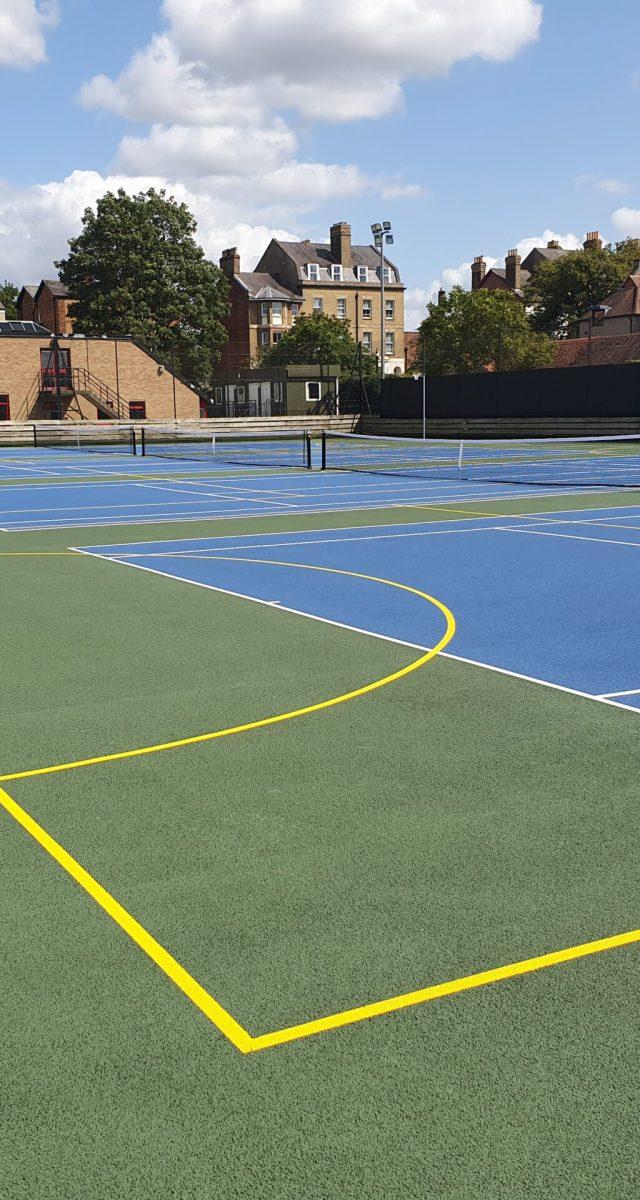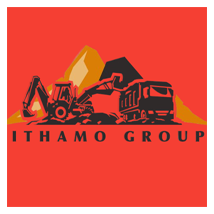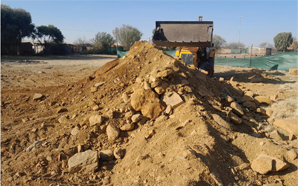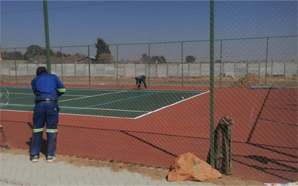
Our Testimonials
Tennis Court Surfaces
The best value comes from the integrity of
successful & working perfectly.
COURTS SURFACES – WHICH IS BEST?
If you follow professional tennis, you might know that matches are played on various surfaces like clay, cushioned acrylic, or grass, and players often have preferences for these different types. Some players excel on one surface more than others. Nowadays, there are even more types of tennis courts available, and at Charles Lawrence Tennis Courts, we offer and install a range of surface materials. Each surface has its own advantages, so you’ll want to choose the one that best fits your needs.
Painted porous macadam hard courts
Most tennis courts in schools, councils, and private homes have a tarmacadam surface because it's affordable to install and maintain. It provides a good bounce for the ball, resists slipping, and drains rainwater quickly. However, one downside is that it can take a while to set properly.
Sand filled and sand dressed artificial grass carpets
Artificial grass courts are easier to maintain than real grass, though they still need regular brushing to keep the sand infill even and avoid buildup. For tennis or similar low-impact sports, a sand-dressed carpet is ideal. If you want to use the court for multiple sports, like football, a sand-filled carpet is a better choice.
Polymeric rubber
Polymeric rubber surfaces, which look like athletics tracks, are also excellent for tennis courts. They are porous, meaning they drain water quickly and can be used even after heavy rain, plus they are easy to maintain. The cushioning in polymeric surfaces makes them ideal for older players by providing a slower and softer playing experience. Although they cost more to install initially, they wear better over time and often offer good long-term value.
Artificial clay
Artificial clay courts are crafted from a synthetic carpet combined with a sand infill, offering many of the benefits of natural clay courts, which are favored by many professional players. These surfaces provide similar performance in terms of ball speed and bounce but require less frequent upkeep. They are versatile and can be used both indoors and outdoors, and they can even be colored to resemble traditional clay courts.
Porous cushioned acrylic
Acrylic courts are designed to be all-weather surfaces, meaning they quickly drain away any rain and can be used year-round without affecting performance. This feature makes them highly popular among tennis clubs and other sports facilities, as they offer consistent playability regardless of weather conditions.
The construction of acrylic courts includes a permeable cushioned layer placed between the acrylic surface and the asphalt base. This not only ensures that the surface remains porous and maintains good drainage but also adds a layer of comfort for players, reducing the impact on their legs and joints during play.
Non-porous cushioned acrylic
Hard courts are a popular choice for many tennis facilities, including those in South Africa. This surface is frequently used in professional tennis, making it a familiar choice for both players and coaches. Its popularity is partly because it helps develop and reward good playing techniques, as noted by tennis organizations.
Hard courts are ideal for training and coaching due to their consistent playing conditions. The surface encourages players to refine their skills and technique, which is beneficial for improving their game. However, hard courts are non-porous, which means they do not drain water as quickly as some other surfaces. After rain, these courts may require additional effort to make them playable again, as water can linger on the surface.
Ithamo Group Company
Contact Us


